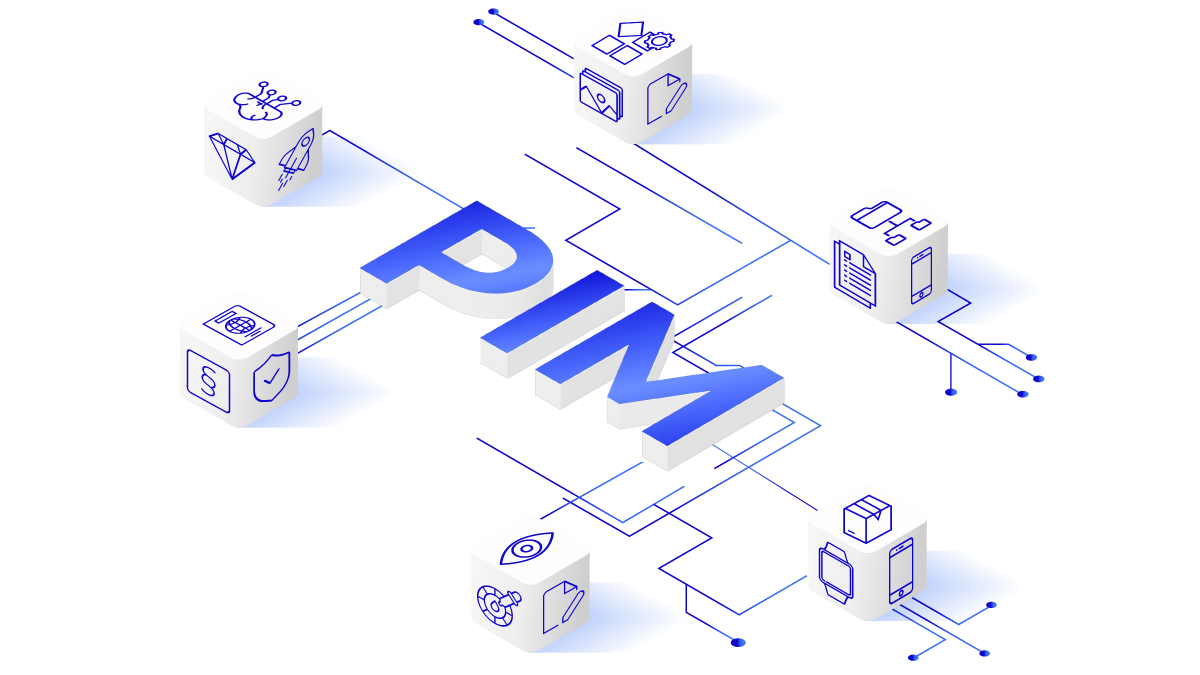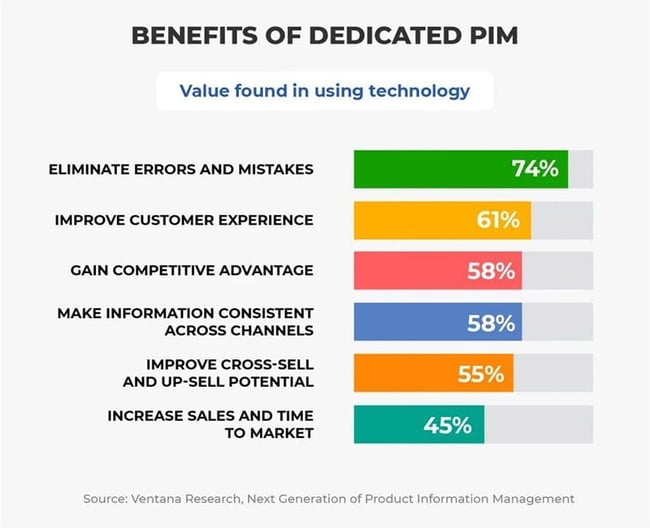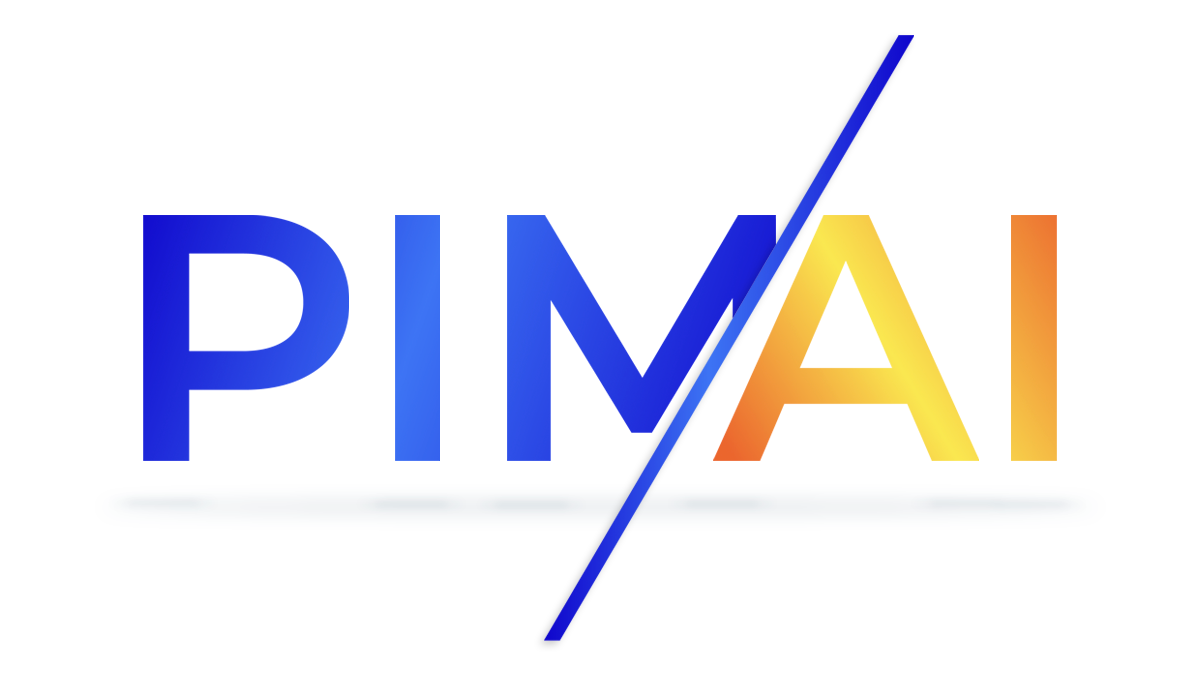What is Product Information Management (PIM)?

Product data chaos? Not on our watch.
Sign up for practical tips that help you launch faster, sell smarter, and finally get your product info under control.
For e-commerce businesses handling thousands of SKUs and digital assets, managing data manually is not only time-consuming - it’s unsustainable.
Inconsistent information across sales channels confuses customers, and erodes trust, and that’s just the tip of the iceberg. This is where a Product Information Management (PIM) system makes all the difference.
Whether you’re a retailer or a manufacturer, PIM helps overcome the challenges of managing product information and lays the foundation for adopting a modern, composable commerce approach tailored to your customers’ needs.
In this guide, we’ll explore what PIM is, its core functionalities, and how it can transform your business.
What is Product Information Management?
Imagine having a tidy digital library where you can quickly access every detail about your products - descriptions, images, specifications, pricing, and more - all in one easy-to-manage place.
That’s exactly what a PIM system does. It centralises all product data, ensuring it stays up-to-date and consistent throughout your organisation and every sales channel.
Rather than juggling endless spreadsheets or hopping between different tools, you and your team can work together in a single system. Perfecting technical information while crafting compelling marketing copy has never been easier, thanks to built-in workflow features that streamline collaboration.
Once everything is ready, your PIM system allows you to publish across online shops, third-party marketplaces, and partner sales channels - saving time and minimising errors.
All in all, if your product range is expanding and you want to maintain a strong, professional presence across all channels, PIM system is the way to go.

Core Functionalities of PIM System
Product data is more than just a list of product attributes. It’s one of your organisation’s greatest assets, showcasing the very best your company has to offer.
Below, we explore some core functionalities that make PIM systems indispensable for growing businesses.
Centralise Data
PIM serves as a single source of truth for all product data. It collects, standardises, and stores information from various sources, including ERP systems, spreadsheets, and DAM platforms.
Enrich Product Content
PIM enhances product data by adding detailed attributes, images, videos, and localisation. This creates rich product content that is accurate and engaging for customers across all regions.
Automate Data Distribution
PIM systems can automatically distribute data to all connected sales channels and internal systems. This ensures that every platform has accurate and consistent information at all times. The process, known as product data syndication, is streamlined thanks to PIM’s integration capabilities.
Support Cross-Functional Collaboration
With role-based access and workflows, teams like marketing, IT management, and business strategy can work together efficiently within a PIM system. What’s more, suppliers and external partners can also upload data directly into the PIM system.
Ensure Scalability and Efficiency
As businesses grow and products multiply, a PIM system prevents data errors, speeds up product launches, and reduces manual work - saving time, and resources, and maintaining brand integrity. Its scalability ensures it adapts to increasing product volumes and business complexity, supporting growth without compromising efficiency.
What Are the Benefits of PIM?
A PIM platform helps manage product data more efficiently. Below are a few ways it can make a positive impact.
In a study we conducted with Ventana Research, we found that 74% of the companies surveyed want to use a PIM solution primarily to avoid data errors and mistakes.

But the benefits of PIM go beyond improving data quality! Let's explore the other key advantages that companies can unlock through the implementation of a PIM solution.
1 / Consistent Customer Experience
PIM ensures product information is accurate and uniform across online stores, apps, and physical locations, building trust and loyalty.
For instance, a furniture retailer using PIM can ensure that a sofa’s dimensions, materials, and care instructions are identical on the website, in catalogues, and on in-store tags. This consistency helps customers make informed decisions, reducing returns and increasing satisfaction.
2 / Fewer Data Entry Mistakes
Storing all data in one location reduces the risk of outdated prices or contradictory descriptions. Incoming product details are categorised, duplicates are eliminated, and updated content is accurately organised. It helps prevent anyone using out-of-date information when coming up with deals or listing products that are no longer offered by the company.
3 / Omnichannel Engagement
Businesses around the world are going omnichannel and engaging customers across multiple channels throughout their entire shopping journey. This can often be challenging due to the need for consistent and tailor content at all customer touchpoints. A PIM solution addresses this by organising both digital and physical product content, enabling teams to assign the right images, videos, and descriptions to each catalogue and campaign.
4 / Time Saved with Automation
Routine administrative tasks - such as updating product listings across multiple channels - can be managed automatically. This puts an end to the need for manually updating thousands of item entries in an online store.
5 / Faster Time-to-Market
Centralising information speeds up the process of releasing new lines or variants, since every team member uses the same data. This shared data, including readily available and accurate specifications, pricing, and marketing assets, enables companies to quickly adapt their products and launch new lines faster than competitors using disparate data.
6 / Stronger Sales
Clear, accurate product details boost sales by building customer confidence. Comprehensive information – from detailed specs and high-quality images to accurate pricing – empowers shoppers. Accurate information also minimises returns and customer service queries, saving time and resources while improving customer satisfaction and loyalty.
Checklist: 5 Signs You Need PIM
Answer the questions below to figure out if it’s time to get a PIM system:
 Do you manage a large catalogue with thousands of products?
Do you manage a large catalogue with thousands of products?
 Is your team overwhelmed by updating data manually?
Is your team overwhelmed by updating data manually?
 Are customers noticing mismatched or outdated descriptions?
Are customers noticing mismatched or outdated descriptions?
 Are you expanding to new markets or sales channels?
Are you expanding to new markets or sales channels?
 Do you struggle to localise product information effectively across regions?
Do you struggle to localise product information effectively across regions?
If you answered “yes” to any of these, consider opting for PIM to streamline your operations and improve your results.
But if you still have any doubts, why not reach out to our advisors for a free, no-obligation consultation? They are here to provide the answers to your questions and point you in the right direction.
How Does PIM Compare to Other Tools?
Choosing the right tool for managing your product information can be challenging, especially with so many options available. Each tool has its strengths and limitations, but understanding where PIM stands out can help you make an informed decision.
Below, we compare PIM with other commonly used tools to highlight how it addresses specific business needs.
PIM vs Excel
While Excel works for small-scale tasks, it struggles as businesses grow, especially with managing product information. As your product catalogue expands, it lacks the scalability to handle large data volumes, automation for efficiency, and data governance to ensure consistency and accuracy across channels.
PIM vs ERP
Enterprise Resource Planning (ERP) systems manage operational data such as inventory and finances, but they don’t handle enriched product content or its distribution. PIM complements ERP by centralising and enriching product information, ensuring accuracy and consistency, and enabling efficient distribution across multiple channels. Together, they streamline operations and enhance the customer experience.
PIM vs DAM
Digital Asset Management (DAM) systems are excellent for managing digital assets like images and videos; however, they do not provide the tools needed to manage product attributes, categories, or data distribution. For businesses seeking a more unified solution, a PIM with integrated DAM functions combines the best of both worlds to offer you centralised control of your product data and digital assets together.
PIM vs CMS
Content Management Systems (CMS) are designed for managing website content, not product data. PIM ensures that all product details are accurate and ready for use across various CMS platforms, maintaining consistency across digital channels.
PIM vs MDM
Master Data Management (MDM) systems focus on managing core business data but do not offer the enrichment, localisation, or distribution capabilities of PIM. PIM systems specialise in optimising product data specifically for sales and marketing purposes.
How to Get Started with PIM
Implementing new technology can be challenging, but dividing the process into manageable steps helps ensure a seamless transition. Focusing on specific needs and setting clear goals allows you to successfully implement a PIM solution that revolutionises the way you manage product data.
-
Assess your needs: identify pain points, such as manual processes or data inconsistencies.
-
Choose a solution: select a PIM system that integrates with your tech stack and supports your growth goals.
-
Plan implementation: define workflows, set quality standards, and onboard teams.
-
Measure success: track improvements in efficiency, data accuracy, and time-to-market.
Once you've identified the key features of a PIM solution, the next step is to create a Request for Proposal (RFP) and send it to potential PIM providers. This RFP will help you outline your requirements, expectations, and criteria so that you can proceed more efficiently when selecting a provider.
To help you get started, you can download our free, customizable RFP template, which already includes 70 key questions, and tailor it to your company's needs.
Why Choose Bluestone PIM?
Managing product information can sometimes feel like a balancing act, keeping everything aligned while handling various demands. Bluestone PIM is here to take that weight off your shoulders, providing you with a solution that simplifies processes and helps businesses work smarter.
Let’s get into details - what makes Bluestone PIM a good fit?
A System That Grows with Your Company
Bluestone PIM is built using MACH technology (Microservices, API-first, Cloud-native, Headless). It is this modern framework that powers Composable PIM — a PIM solution designed to support composable commerce by enabling businesses to build a customisable, modular tech stack.
Composable PIM allows businesses to select and integrate only the components they need, creating a system tailored to their specific requirements. This modular approach means you can adapt and scale effortlessly as your needs change, avoiding the rigidity of all-in-one solutions.
Effortless Connectivity for All Your Channels
With Bluestone PIM, connecting all your channels to centralised product data is straightforward and hassle-free. The platform is designed to keep everything in sync, whether it’s sales channels, POS systems, or marketing platforms. If you’re looking to deliver an omnichannel experience or keep your content consistent across platforms, our Extension Hub has got you covered.
With APIs, native integrations, and third-party connections to tools like commercetools, Contentstack, Google Shopping Feed, and social media, Bluestone PIM simplifies your workflows so you can focus on what matters most. Plus, easy-to-set-up webhooks and custom events make automating communication between systems effortless.
Always Improving, Never Stagnant
No one wants to feel left behind, especially when it comes to technology. Bluestone PIM evolves continually, as our team releases regular updates based on user input and the latest industry trends. You’ll always have access to the latest features designed to keep you ahead.
The AI Advantage: Smarter, Faster, Better
We take automation seriously and have developed AI features as part of our PIM solution to make managing product information faster and easier. Our proprietary tools—AI Analyst, AI Linguist, and AI Enrich—handle time-consuming tasks, ensuring your product data remains accurate and consistent across platforms.
- AI Analyst highlights inconsistencies in your product data, suggests corrections, and offers reliability scores, saving time and boosting data quality.
- AI Enrich simplifies content creation by generating product descriptions in multiple languages, pulling attributes from images, and developing engaging and search-friendly texts.
- AI Linguist goes further by specialising in refining and perfecting multilingual content. It ensures translations are accurate, culturally appropriate, aligned with your brand’s tone, and free from spelling errors.
Watch our video for an overview of the features.
Collaboration That Works for Everyone
Collaboration is key in any organisation, but it’s often easier said than done. Bluestone PIM makes it happen, with features such as in-app communication, task tracking, and customisable role-based access. Everyone stays on the same page, and workflows become refreshingly smooth.
Support at Every Step of the Way
From the very start, our team works closely with you to ensure everything runs smoothly. Whether you need help setting up, solving a tricky issue, or tweaking the system to fit your needs better, we’re just a call or message away.
Think of us as an extension of your team – always ready to lend a hand and help you get the most out of Bluestone PIM. With us, you’ll never be forced to figure things out on your own.

We evaluated many PIM solutions and selected Bluestone PIM based on its easy user interface, advanced data modeling, and modern application programming interface. SaaS delivery made the choice even easier. We have integrated Bluestone PIM with our content management system Sitcore, and it all works very smoothly. Bluestone PIM has proven to be a solid partner and enabled us to increase our digital business volume dramatically.
Joakim Solem E-commerce Manager at Neumann
Start Simplifying Your Product Data Management
Disorganised data shouldn’t be holding you back. A PIM solution makes product management easier, improves customer satisfaction, and helps your business grow.
Ready to take the next step? Contact us for a demo or consultation to see how Bluestone PIM can work for you.
Choosing Bluestone PIM could be the smartest decision your business makes this year.
See AI-powered PIM in action
Talk to our experts today and discover how Bluestone PIM can address your needs.




